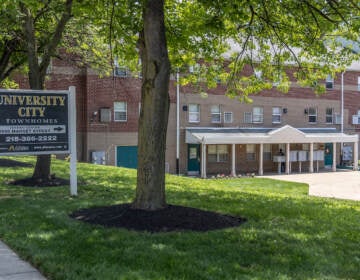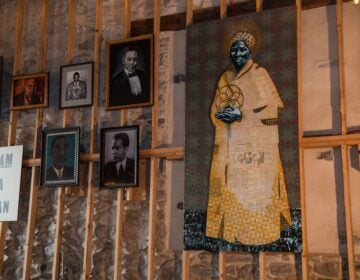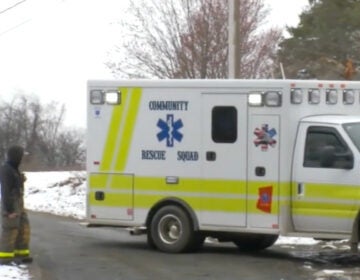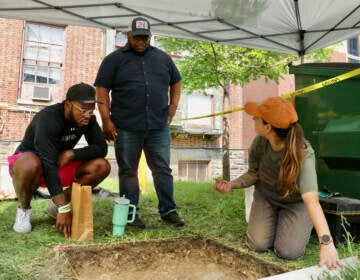Eroded by gentrification, Swarthmore’s historically Black neighborhood is working to preserve a 100-year history
For newcomers, Saturday’s podcast listening party was a history lesson. But for Swarthmore’s historically Black neighborhood, storytelling is a way of resisting erasure.

Swarthmore community members listen together to a podcast episode on the history of the Wesley AME Church on Saturday. (Zane Irwin/WHYY)
From Philly and the Pa. suburbs to South Jersey and Delaware, what would you like WHYY News to cover? Let us know!
The Historically Black Neighborhood of Swarthmore (HBNS) has stood for over a century.
But as gentrification prices out longtime residents and threatens to erase the neighborhood’s history, community leaders are scrambling to preserve the collective memory and lived experiences of the neighborhood.
On Saturday, dozens of Swarthmore residents gathered for a listening party to honor the neighborhood’s history. A live DJ from Brooklyn opened for the main event: a 25-minute podcast episode about the century-old church that has held the HBNS together.
Attendees heard the second installment of a five-episode podcast series spearheaded by HBNS resident Jeanine Osayande. She began recording elders’ stories in 2010 after she noticed how rapidly the economic and racial demographics were shifting in the neighborhood.
Today, the three-by-two block area that once housed Swarthmore’s only majority-Black neighborhood is mostly white. Many of the homes go for half-a-million dollars or more.
“There’s soon going to be this loss… of [the] voices, the memories, the stories, the contributions of the black community,” Osayande said.
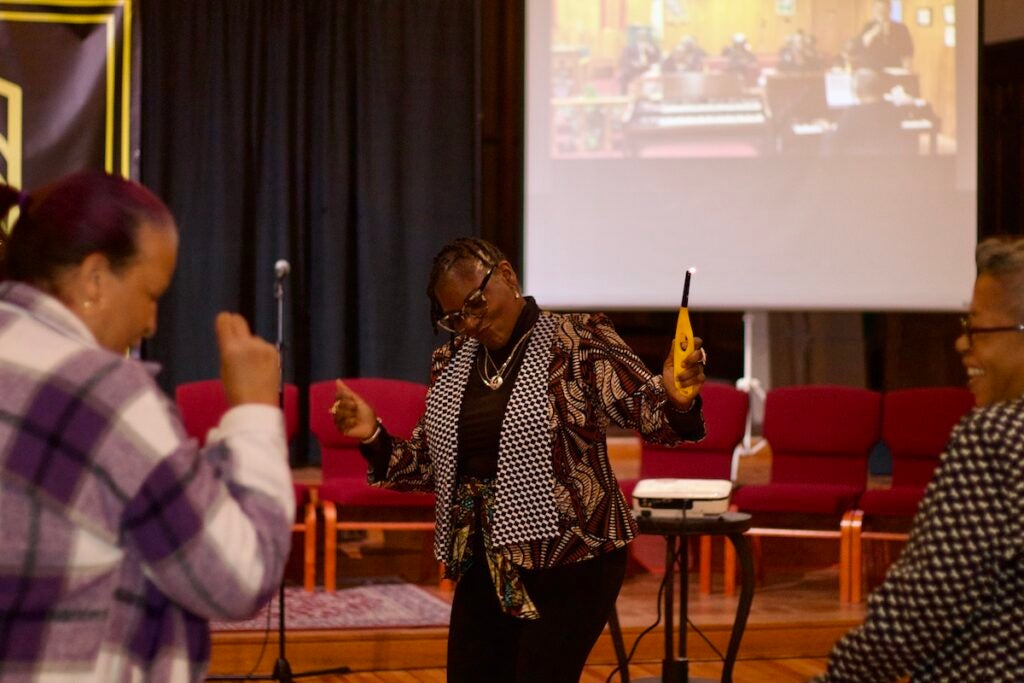
One of the voices in Saturday’s presentation was Kim Durnell, a mother and longtime resident. Growing up there, she said, the world revolved around Wesley AME Church.
Durnell remembered putting on fancy hats and helping hole-punch the programs for Easter pageants with her friends.
“No matter what was going on — they could argue, fuss, and fight, but they would go right back and work together,” she recalled.
Founded in 1921, the Wesley AME church grew out of the African Methodist Episcopal tradition. The denomination was created in Philadelphia by a coalition of Black congregations resisting discrimination in the church.
“The African Methodist Episcopal Church was born out of a need for justice,” said Catherine Brownlee, Wesley’s pastor. She said the church house welcomes about 40 people each Sunday, though more of the congregation than before travels from outside the neighborhood to attend.

Opinions differ in Swarthmore — and across the country — on whether and how historic communities like the HBNS can be shielded from rising property values and adverse zoning decisions.
“We don’t accept that gentrification and displacement … [are] inevitable, foregone conclusion[s]. I don’t accept that,” said Scarlett McCahill, a Swarthmore Borough Council member.
For solutions, McCahill pointed to an April report by Swarthmore’s Development and Affordability Task Force. The group recommended making space for more kinds of affordable housing and an overhaul of the borough’s zoning laws.
But Mayor Marty Spiegel says it’s hard for a town of just over 6,000 to swim against the current as national market trends drive up home values.
“I’m not sure that we are going to be able to legislate that out of existence,” he said.
Spiegel said the council will mull over a new comprehensive plan based on the task force’s findings in the coming months.
Both Spiegel and McCahill attended Saturday’s listening party. The borough directed $10,000 in pandemic relief funds to help create a walking history tour of the HBNS.
Despite these gestures, community members say the future is uncertain.Their sense of community is eroding as institutions struggle or disappear.
Osayande remembers gathering with family and friends in the basement of the Wesley AME Church. Now, the foundation is crumbling, and she said the church is struggling to gain the support they need to fix it.
“We don’t even have a place as a community to just break bread,” Osayande said through tears.

Get daily updates from WHYY News!
WHYY is your source for fact-based, in-depth journalism and information. As a nonprofit organization, we rely on financial support from readers like you. Please give today.


